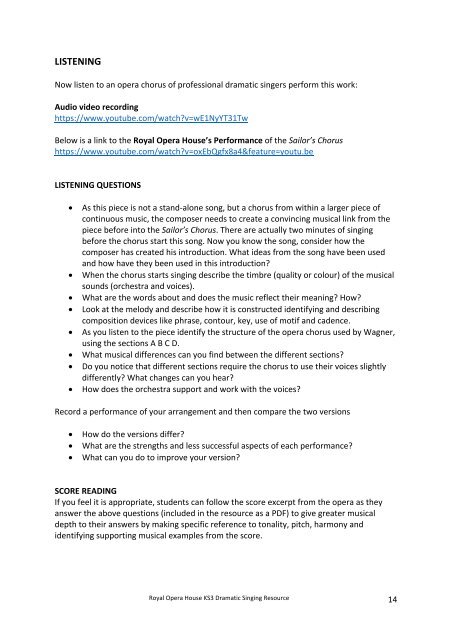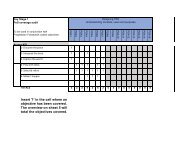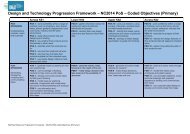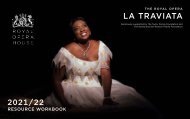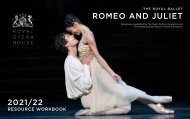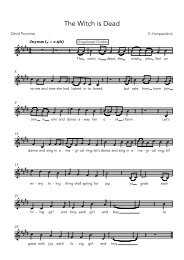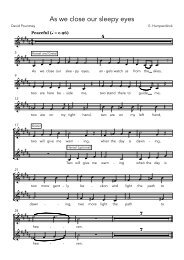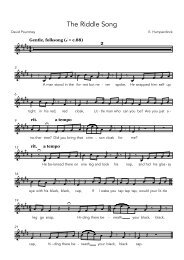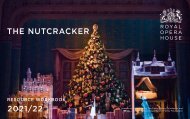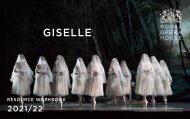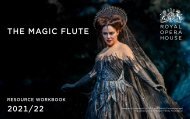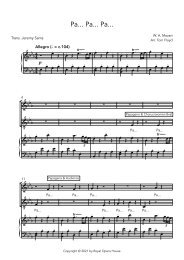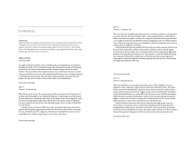Flying Dutchman Teacher Resource Pack
You also want an ePaper? Increase the reach of your titles
YUMPU automatically turns print PDFs into web optimized ePapers that Google loves.
LISTENING<br />
Now listen to an opera chorus of professional dramatic singers perform this work:<br />
Audio video recording<br />
https://www.youtube.com/watch?v=wE1NyYT31Tw<br />
Below is a link to the Royal Opera House’s Performance of the Sailor’s Chorus<br />
https://www.youtube.com/watch?v=oxEbQgfx8a4&feature=youtu.be<br />
LISTENING QUESTIONS<br />
• As this piece is not a stand-alone song, but a chorus from within a larger piece of<br />
continuous music, the composer needs to create a convincing musical link from the<br />
piece before into the Sailor’s Chorus. There are actually two minutes of singing<br />
before the chorus start this song. Now you know the song, consider how the<br />
composer has created his introduction. What ideas from the song have been used<br />
and how have they been used in this introduction?<br />
• When the chorus starts singing describe the timbre (quality or colour) of the musical<br />
sounds (orchestra and voices).<br />
• What are the words about and does the music reflect their meaning? How?<br />
• Look at the melody and describe how it is constructed identifying and describing<br />
composition devices like phrase, contour, key, use of motif and cadence.<br />
• As you listen to the piece identify the structure of the opera chorus used by Wagner,<br />
using the sections A B C D.<br />
• What musical differences can you find between the different sections?<br />
• Do you notice that different sections require the chorus to use their voices slightly<br />
differently? What changes can you hear?<br />
• How does the orchestra support and work with the voices?<br />
Record a performance of your arrangement and then compare the two versions<br />
• How do the versions differ?<br />
• What are the strengths and less successful aspects of each performance?<br />
• What can you do to improve your version?<br />
SCORE READING<br />
If you feel it is appropriate, students can follow the score excerpt from the opera as they<br />
answer the above questions (included in the resource as a PDF) to give greater musical<br />
depth to their answers by making specific reference to tonality, pitch, harmony and<br />
identifying supporting musical examples from the score.<br />
Royal Opera House KS3 Dramatic Singing <strong>Resource</strong> 14


